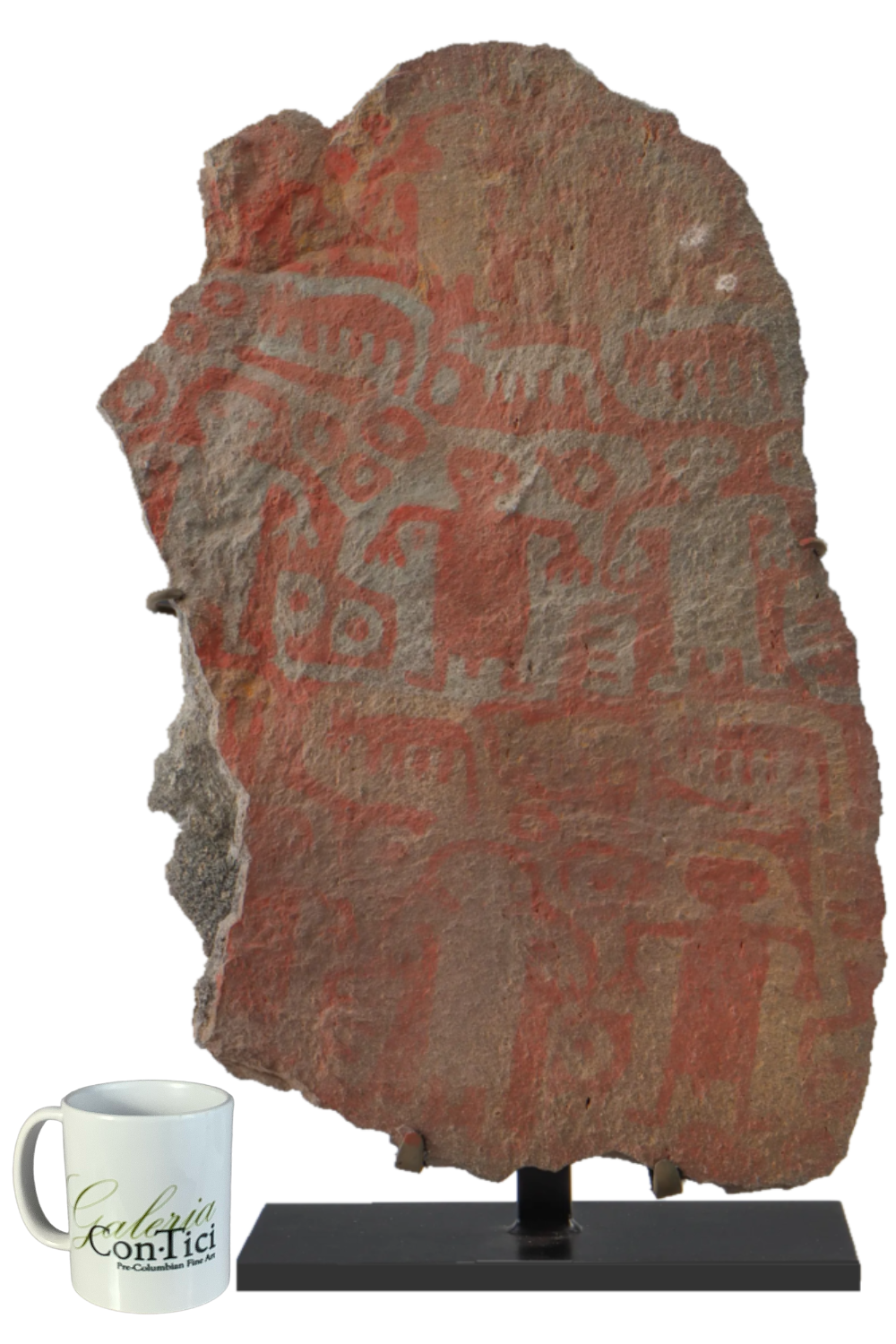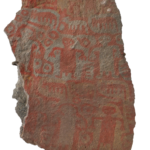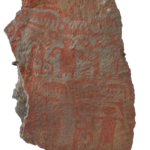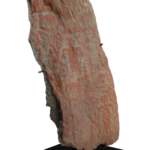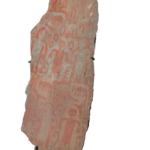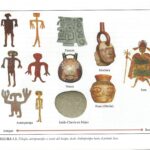Antimpampa Painted Stone Tablet c. 3800 – 2200 BP
Intricate Details and Artistic Narrative of this
Andean Stone Tablet
This gray volcanic stone is painted monochrome red in the Antimpampa style. The prominent motifs are anthropomorphous and zoomorphic figures. The scene centers on abstract three-figured humanoids with alternating inverse animals and other adjacent figures. Formative Period (c. 3800 – 2200 BP).
Measures 21″ in height, 13″ in width, and 1″ in depth. Height on the included stand is 25″.
Provenance: Ex. Cathryn Cootner Estate Collection, Sonoma, CA
These adorned stone tablets resemble a collection of later ceramic plaques found at the mountainous Chucu site, Cerro Cupara, Chuquibama, Condesuyos/Arequipa, Peru. They are thought to have served as votive offerings, ensuring the secure journey of the soul to the “Other World.”
Related Examples
Museo National De Arcqueologicas, Lima, Peru – See: Arcqueologicas, Vol. 21, Museo Nacional de Arcqueologicas, Antropologia E Historia Del Peru, 1992, figs. 23, 30, and 37, for a group of ceramic plaques collected at the Chucu site, Arequipa, Peru.
Ref: Jesús E. Cabrera has written extensively on these enigmas. La Cultura Antimpampa and Diseño Grafico Arcaico. Rock Art Research (AURA) Volume 37, Number 1 article by Jesús E. Cabrera pp. 59-66. Available in pdf format upon request.
Cathryn M. Cootner, a prominent figure in ethnographic art and textiles, left an enduring mark on the community with her profound enthusiasm for diverse tribal arts. From the esteemed Hajji Baba Club in New York to San Francisco’s annual Tribal Arts Show, her passion resonated widely. As a perpetual learner, she immersed herself in collecting, studying, teaching, and exhibiting tribal arts for over four decades.
In 1968, Cootner delivered her inaugural lecture on textiles, marking the beginning of a remarkable journey. By 1981, she assumed the role of guest curator at the Textiles Museum in Washington, D.C. The subsequent year saw her appointment as the first Associate Curator in Charge of the Rug Collection at San Francisco’s M.H. de Young Memorial Museum. Progressing to Curator of Tribal Rugs and eventually Curator-In-Charge of the Textiles Department, Cootner’s dynamic acquisition and exhibition initiatives played a pivotal role in elevating the museum to its current status as a respected repository for top-tier textiles and oriental rugs. A highlight of her contributions was the groundbreaking 1991 exhibition showcasing Caroline and H. McCoy-Jones’s unparalleled collection of Anatolian kilims.
Beyond her museum roles, Cootner was an appraiser and authored two books, seamlessly integrating her personal and professional passions. Outside the confines of the museum, she was an avid collector, filling her home with ethnographic textiles and objects from across the globe, each possessing a cherished story she delighted in sharing.
Sold – Domestic Delivery Included
This item may become featured here in the Native American Art Magazine
Click here to see our next item.
Are you seeking a particular piece? Please feel free to let us know.
Regional Division of Pre-Columbian Americas’ Major Archaeological Cultural Phases
